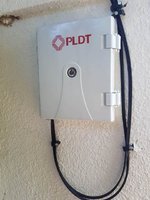Hello,
I will be needing to network two areas (residential areas) wherein standard CAT5/E/6 is not doable (more than 100 meters, but less than 200 meters) and WiFi isn't an option (will be needing fast ethernet; high bandwidth 800+mbps AC backhauls i.e. UBNT AirFiber are too expensive, I'd prefer to use wired connections, but will do UBNT nanostations or some cheaper UBNT WiFi if wired is not possible).
I'm currently exploring running fiber optic cables in plastic piping from one house to another.
I know nothing about how to get around this. Will this be cheap-ish?
Current networks are really just 2 home networks powered by basic unmanaged gigabit switches that will need a connection between them.
I saw some items on amazon that could fit the bill. But I don't know if this will suit my needs or what other stuff I'll be needing.
Can anyone with any experience or helpful links chime in on this?
Questions:
a) will this be cost effective? looking for this to be less than 1000$ The cheaper the better!
b) what exact items do I need?
c) are there any alternatives?
Thanks!
mda
https://www.amazon.com/TP-Link-Ethe...1485685605&sr=8-1&keywords=fiber+optic+switch
I will be needing to network two areas (residential areas) wherein standard CAT5/E/6 is not doable (more than 100 meters, but less than 200 meters) and WiFi isn't an option (will be needing fast ethernet; high bandwidth 800+mbps AC backhauls i.e. UBNT AirFiber are too expensive, I'd prefer to use wired connections, but will do UBNT nanostations or some cheaper UBNT WiFi if wired is not possible).
I'm currently exploring running fiber optic cables in plastic piping from one house to another.
I know nothing about how to get around this. Will this be cheap-ish?
Current networks are really just 2 home networks powered by basic unmanaged gigabit switches that will need a connection between them.
I saw some items on amazon that could fit the bill. But I don't know if this will suit my needs or what other stuff I'll be needing.
Can anyone with any experience or helpful links chime in on this?
Questions:
a) will this be cost effective? looking for this to be less than 1000$ The cheaper the better!
b) what exact items do I need?
c) are there any alternatives?
Thanks!
mda
https://www.amazon.com/TP-Link-Ethe...1485685605&sr=8-1&keywords=fiber+optic+switch
As an Amazon Associate, HardForum may earn from qualifying purchases.
![[H]ard|Forum](/styles/hardforum/xenforo/logo_dark.png)
